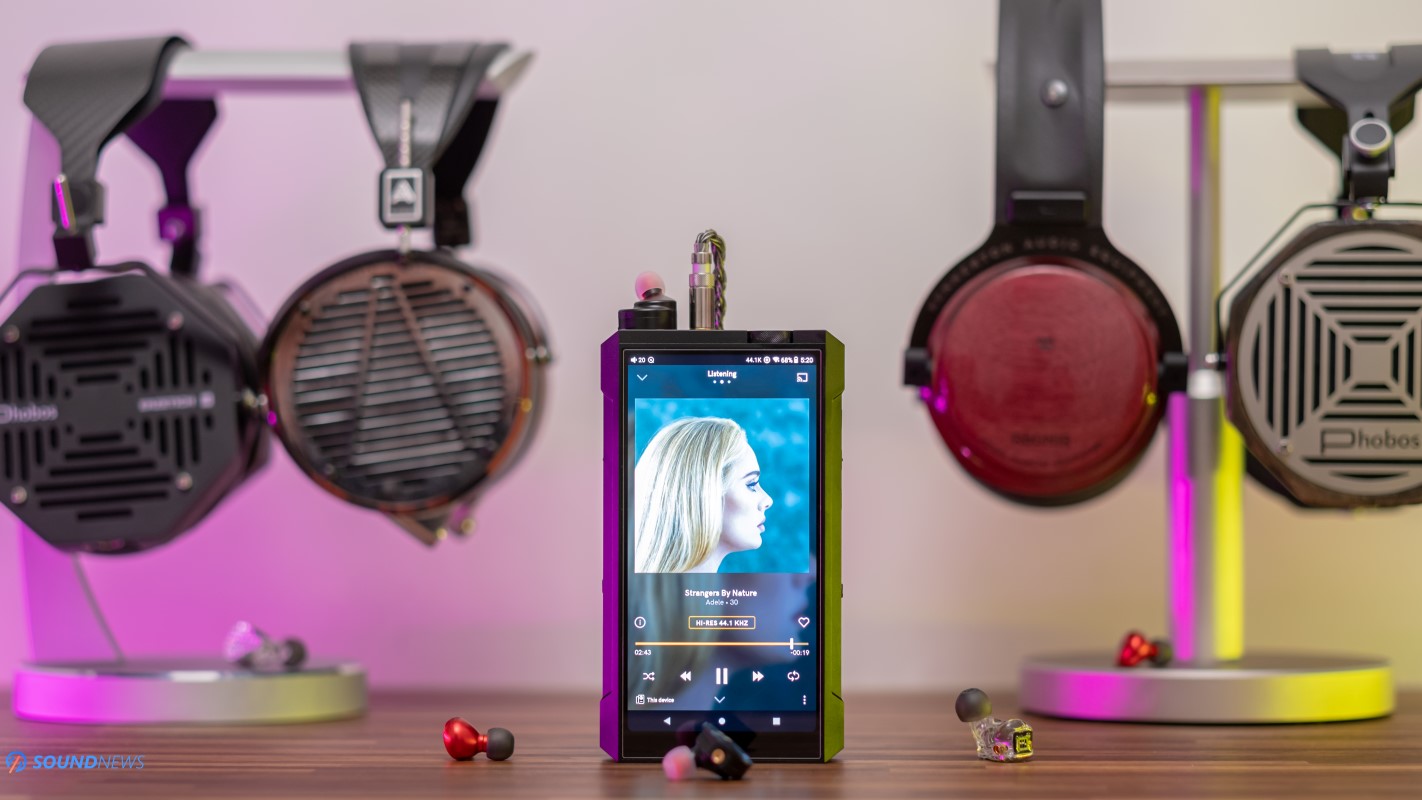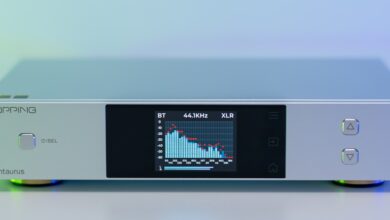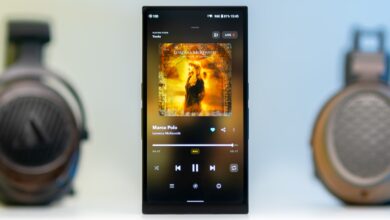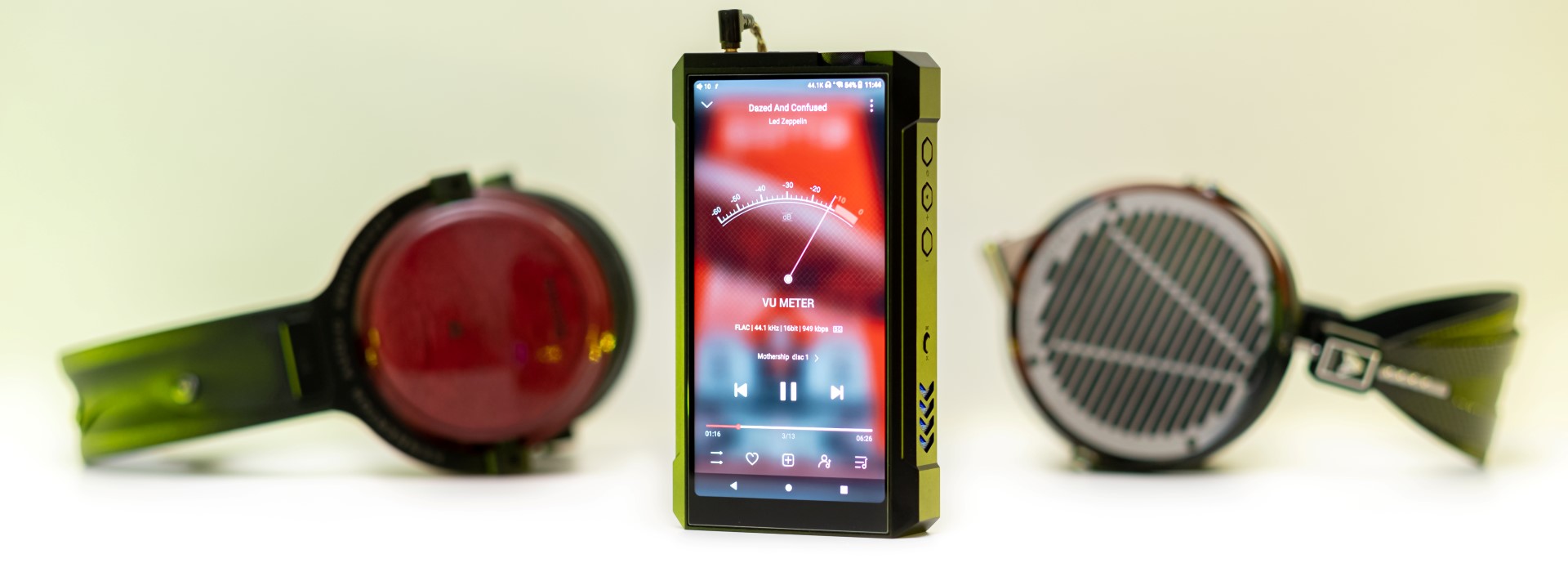
My Video Review:
The DAP days are over? I had a good laugh John, but we’re far from there. Even in such troubled times when people are working from home, unpredictably…everything that was tied to portable audio started growing at an unnatural rate. Something wasn’t adding up, even for me. I’m not only about FiiO, I’m about all DAP manufacturers that released in 2021 several portable units and some of them are being released as I am typing this (Hi M9, Hi RS6!). DAP days are ticking counterclockwise, as modern portable players just cemented their inception point once streaming apps appeared on their screens. Personal audio is growing at such a rate, that I fear nothing can stop it anymore. It shouldn’t be a surprise to anyone, as you need a substantial amount of time setting up a stereo, bargaining with your loved ones for costly room treatments and you’ll still need overweight components that would luckily pass the WAF test with flying colors. With portable audio, you are getting a modern do-it-all gizmo that could travel with your anywhere, just take it out of your pocket, connect to your favorite streaming platform, press play and you’ve reached your musical nirvana, freed from room acoustics or obedient neighbors. If you’re into underground or experimental stuff, then you’re in a world of trouble in a stereo and that’s no longer an issue with a battery-powered DAP connected to world-class IEMs.
Everything tied to personal audio is growing so fast, that even people as myself cannot keep up with every single release. I wish I would have the time to test every single DAP and IEM out there, but I just don’t have the time, nor the resources available to make it happen. However, being an avid FiiO M15 user for almost 2 years now, I was shocked when M17 was revealed to the world a few months ago. I was moved by its dimensions and weight and then by its specs and internal components. While FiiO is still marketing it as a portable DAP, I see it as a hybrid portable DAP / desktop DAC and headamp put in the same case. Since I’m still using a world-class ESS-Sabre converter and a THX-AAA-888 equipped headphone amplifier, hearing the newest FiiO DAP that carries the same technology, suddenly became a high priority and I’m glad I can take it for a spin and test the hell out of it.
FiiO M17 is not your usual portable DAP, as everything was turned up to eleven, including its power output. Three watts per channel in a portable device sounded like a unobtanium a few years ago, but FiiO has done it and I cannot wait to tell you more about it. As M15 is fading away into the history books, M17 instantly became their current best DAP and as such, it was priced accordingly. M17 goes for $1799 in the USA and € 1990 in Europe, making it the most expensive FiiO DAP to date. As usual, I’ll be conducting an in-depth review, reporting on everything I find interesting along the way and for a good measure, I’ll add a detailed comparison with its predecessor M15. Until that happens, let’s unbox this bad boy and see what’s inside its huge package.
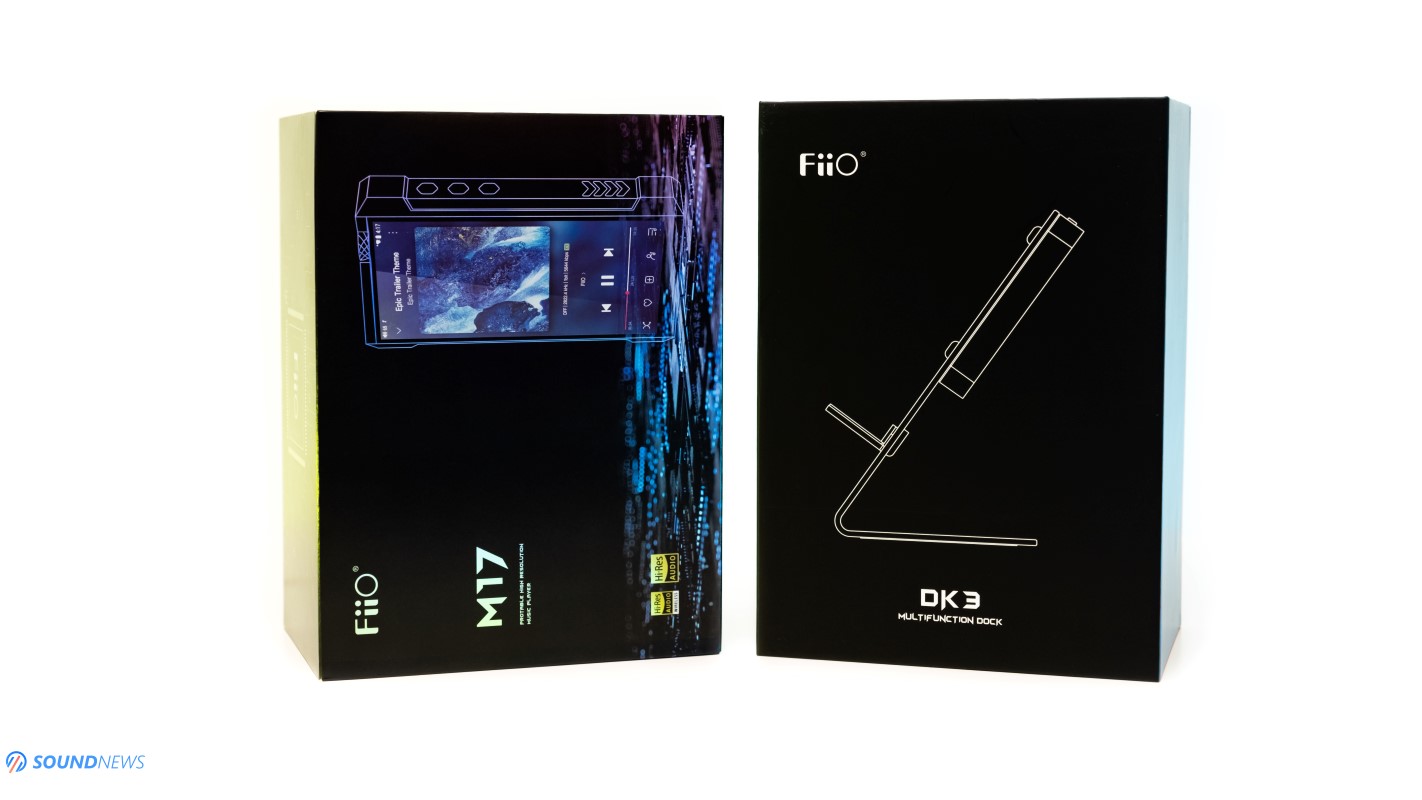
Unboxing Experience
When its predecessor hopped on my table two years ago, I was surprised by a different unboxing experience and it seems that M17 pushed that even farther. I wasn’t aware about this, but FiiO is sending two boxes with every single M17 purchase. In the first box you’ll find the M17 and all its accessories and the second one holds a multi-function dock (DK3). FiiO sculpted their card-board boxes as a bas-relief that added depth and a pseudo-3D feeling. Seeing and holding the M17 for the first time was a revelatory experience, as it felt much bigger and heavier to their M15. As usual, the unit itself was protected from all sides by thick layers of foam, so you can be sure that it will arrive safe and sound to your front door. Just below it, you’ll find a small accessory compartment that holds a tempered-glass protector, all the paperwork as a Quick-Start Guide, a Warranty Card and Open-Source Licenses. Below them, there is a bigger compartment that holds a USB Type-C cable and… drum roll …a switching mode power supply that connects to it via a two-pole DC connector, I’ll tell you more about shortly. In the DK3 box you’ll find a high-quality multi-function dock made out of aluminum that can work as a simple stand or as a cooling dock to lower M17’s working temperature. There are two fan speeds, but I prefer it’s low-RPM setting that wasn’t that noisy to my ears.
The coolest accessory FiiO included in there is a real leather case that fits it like a glove. That leather case was made in such a way that all the heat building up around its back panel and around its sides would be nicely dissipated. Its leather case doesn’t make it hotter and if I’m not attaching its power supply and unlock its fifth gear (enhanced over-ear mode), then M17 gets only barely warm. It’s leather case seems to be well-made, it’s smooth and gentle on the outside and soft on the inside, thanks to a velour padding. I don’t think you’ll ever need a third-party case after seeing this one, as it looks and feels outstanding. This is all you’ll find inside, just add a big capacity MicroSD card or connect it wireless to your favorite streaming app and you’re ready to rock!

Design & Build Quality
Around February 2021, iF Design Awards website leaked the very first photos of FiiO M17 and that got me excited, but also worried as M17 looked so different to anything FiiO has done before. At that point, I remained lightly disappointed after seeing those RGB lights on its sides and of course its spartan look and rough edges. Luckily, that unpolished aluminum look is no more, as the final product seems to be sandblasted and its matte black everything seems to be hiding some design cues. FiiO isn’t mentioning anywhere, but below those RGB lights some air vents are located that move hot air coming from its electronics outside its case, cooling it down in the process. I still dislike those lights, making me think about gaming accessories, but it all makes sense now, as with so much power under its hood, a simple vapor chamber wouldn’t help that much with heat dissipation, hence leaving several air vents opened, so that hot air would be pushed outside. While M17 borrows some design cues of its smaller sibling M11 Plus LTD, M17 is a very different beast altogether, dwarfing any other DAP I’ve held in my hands. It’s simply massive and at 610 grams, it’s twice as heavy and thick compared to M11 Plus and M15. You should understand that M17 wasn’t made for the usual IEM or portable headphone user, it was made as an ultimate tool for headphone enthusiasts that own a substantial collection of IEMs, portable or desktop headphones. FiiO didn’t want to compromise its output power, nor its digital to analog conversion stage. Most of its electronics were designed to work in a desktop environment, powered from the wall and this is precisely why M17 came up so big and bold looking. Please don’t take it as another DAP from the house of FiiO, but more like a portable DAP / transportable DAC and headphone amplifier squeezed into a single block of aluminum.
Once the shock wave passed, I started appreciating its abstract design and those gorgeous diamond-like patterns on its back panel. For a bigger device, it was mandatory putting a bigger screen, the biggest they’ve put on a DAP and that makes browsing through hundreds of albums much easier. Streaming apps never looked better, resolution has been improved as it now rocks a 1080P panel and everything that has to do with its screen, feels like a massive improvement.
Its smaller sibling M11 Plus came with an interactive volume system, but since it took a big portion of its left side, FiiO decided dropping it entirely and going with a time-tested analog volume pot. If you wish, you can disable it and use dedicated volume buttons located on its right side. You can increase or decrease its volume in a lot of ways: by pressing its volume buttons, by touching its left side of the screen, by using its potentiometer or you can even use the FiiO Link app or a Bluetooth remote control, the possibilities are almost endless…
I’m an old-school listener, I own plenty of amplifiers of all sorts, so turning that massive volume wheel up and down feels at home to me and I will be sticking with this configuration.
I might dislike its shape a little bit, but don’t be mistaken, this is a heavy-duty device, built to the highest standards that I’ve seen on a portable device. I can sense that a lot of R&D went into shrinking desktop-class components and squeezing them in a battery powered device, M17 is beyond impressive from an engineering point of view.
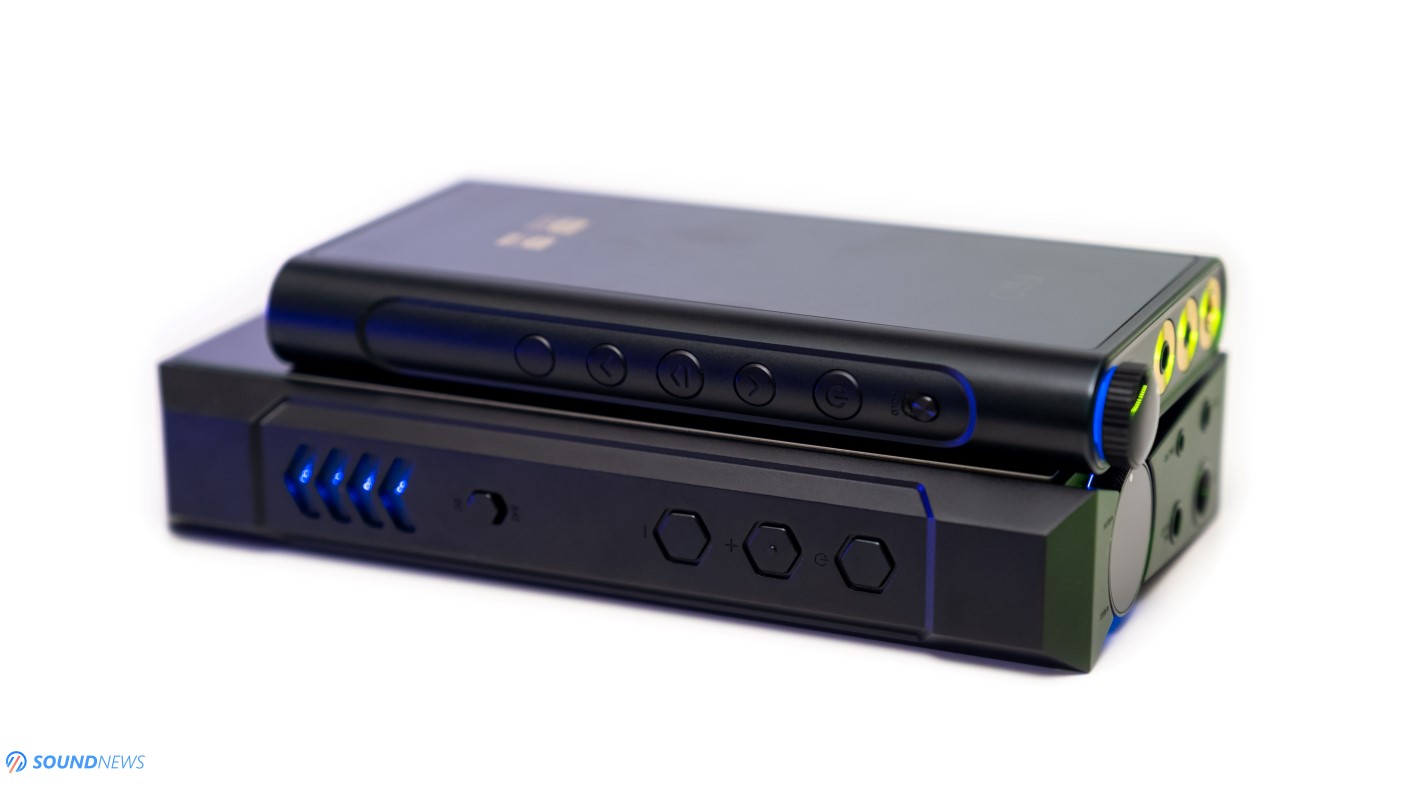
Layout & Buttons
I find the M17 a bit cumbersome and less user friendly to their M15, since every side is filled with buttons, ports, inputs and outputs, you can forget about browsing its menu single-handedly. On top you can spot a huge volume wheel and four headphone outputs: 2.5mm and 4.4mm balanced outputs and 3.5mm and 6.35mm single ended outputs. 3.5mm and 4.4mm ports can also work as a SE or BAL line-output, just in case you’ll hook it up to a desktop integrated or headphone amplifier. On its left, there’s a Previous, Play/Pause, Next and a multi-function button, to which you can assign a plethora of features as: adding to favorites, playing a song randomly, deleting the current playing track, switching digital filters, enabling or disabling EQ, entering USB DAC mode or entering Bluetooth receiving mode. To its right there’s an On/Off button, two volume buttons (that can be disabled if you will) and a BAT/DC switch. In BAT mode, M17 will always draw power from its internal batteries and in DC mode once its external power supply is connected, an additional gain setting would appear on its menu that is called Enhanced-Over-Ear Mode that will skyrocket its power output to some whooping 3 Watts per channel.
On the bottom you’ll find a 12V two-pole DC input, a USB Type-C for charging or data transfer, a USB Type-C for making it work as a USB DAC, there’s a single MicroSD port and a full-sized coaxial input or output. I don’t remember seeing as many ports and buttons on a portable device, but it was mandatory, since M17 is not exactly your average DAP to be used in a gym.
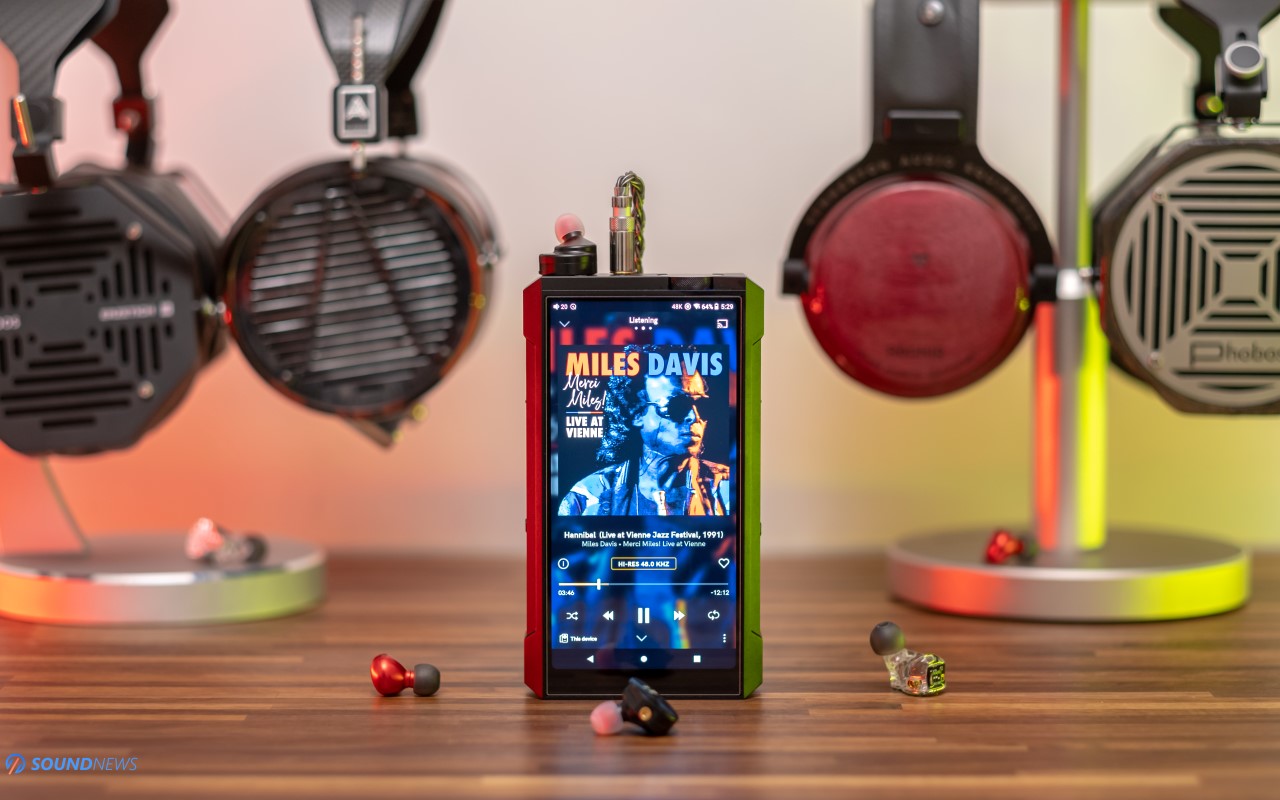
Display
From a 5.15” 720p screen on M15 and 5.5” 720p screen on the newer M11 Plus, M17 jumped to a much bigger and crisper 6” screen that supports a higher resolution of 1080 by 2160 pixels in the same 18:9 aspect ratio. Boosting its screen size, removed a longer chin found on M15, leaving the whole panel for its wonderful LCD screen. It uses an IPS panel with great viewing angles, it’s a colorful and high-quality display that boosts an impressive contrast ratio. I find it more vivid and impactful to the ones found on M11 Plus and M15. Its black and white levels are nicer, but those are not exactly on the same level with a flagship OLED equipped smartphone. Image quality is crisp, it’s vivid and sharp enough due to a good pixel per inch and to a higher resolution. Considering its case dimensions, I believe a 6” screen was a wise choice, as it’s big enough for multitasking, web-browsing, music streaming and light gaming on the go.
At this display size, you can even watch Youtube videos, there’s a gyroscope inside that can be enabled, you can browse web-pages, reply to your emails or do some light gaming on the go, as its newest silicon is more than capable of handling harder tasks…but I would still leave them to your smartphone, so you can have a longer battery life.
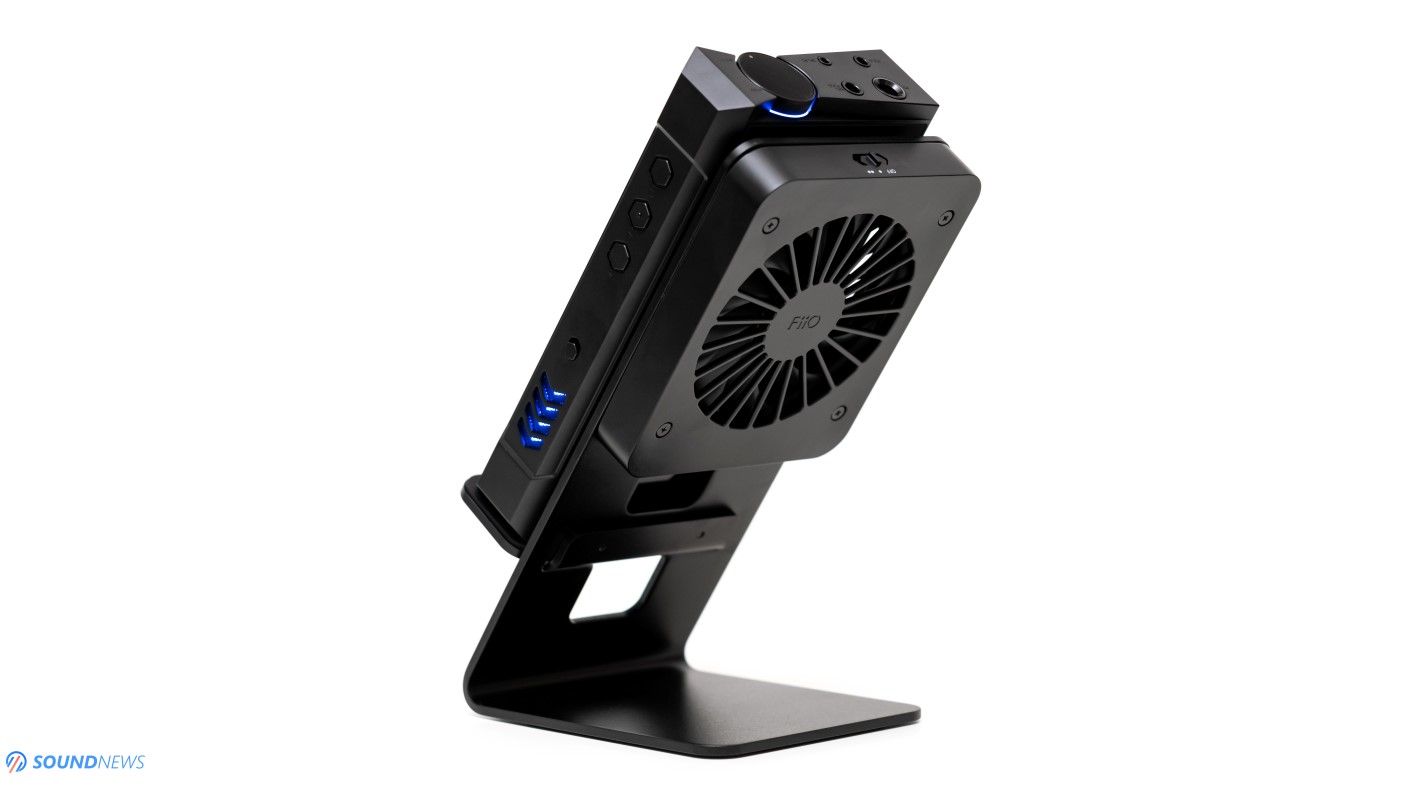
Battery
Speaking of which, its massive digital and analog sections were made for desktop class electronics, so it was mandatory squeezing a massive battery inside and for that reason alone, M17 uses the biggest battery I’ve seen on portable devices. How big it is more exactly? From an already impressive 6000 mAh battery on M11 Plus and 7490 mAh on M15, this time around they went with a massive 9200 mAh battery on M17! A bigger battery would need a longer time frame to be fully charged, but thanks to Quick Charge 4.0 and PD 3.0 standards, it charges 50% faster to the former FiiO DAPs. It goes from zero to full charge in about 4.5 hours and it will offer you back about ~10.6 Hours of music playback on its regular jacks and about ~8.6 hours on its balanced outputs. In real time scenarios, using harder to drive desktop planar headphones on its over-ear headphone mode via 4.4mm balanced output, I’ve had 7 hours and 45 minutes of non-stop music playback, which is great considering I was squeezing a lot more juice out of it. With their own FH9 IEMs on the 4.4mm BAL output, I’ve got 8 hours and a half, since mid-gain was more than enough for ultra-sensitive IEMs.
FiiO added the deep sleep functionality to the M17, it drifts off for almost 42 days! You can forget it in your backpack for about a month and you’ll still have some battery left to finish the newest The War On Drugs album. I’m personally turning-off all my devices when I’m not using them (except for desktop DACs), but if deep-sleep is important to you and you hate those boot times, then M17 will save battery life for very long periods of time.
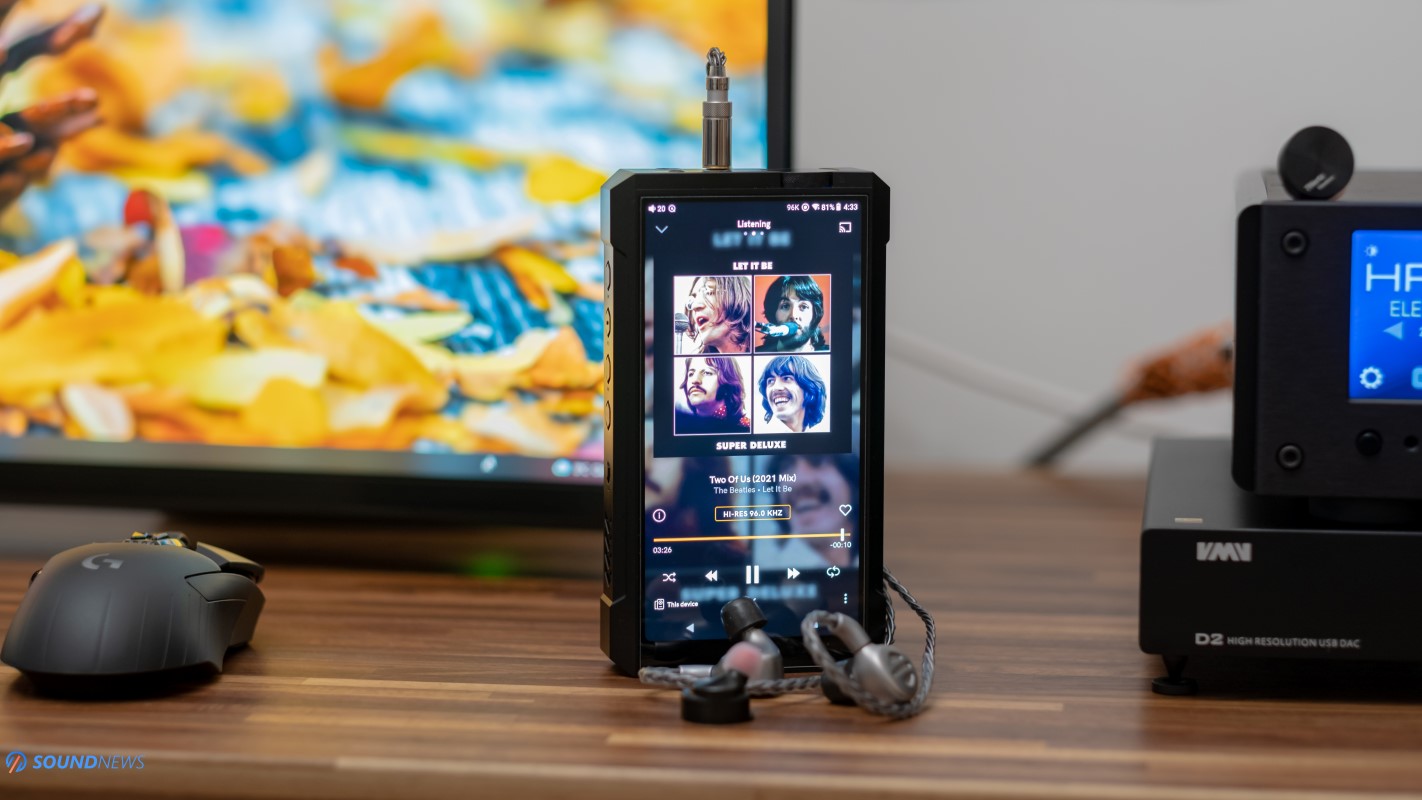
Under the hood of M17
FiiO already moved away from the aging Exynos 7872 SoC that was sitting in their former DAPs to a newer and much faster 8-core Snapdragon 660 that is also powering their M11 Plus LTD. That change was bigger than expected, as sailing through 3rd party apps feels faster, like multitasking on a modern smartphone. FiiO migrated from an ancient Android 7, skipping several generations to Android 10. It means that you no longer need to rely on APKPure or CoolAPK for the latest software updates. You no longer need to use the Applications bubble outside China, as you can now use the official Google Play store and install any 3rd party app you can muster. Its UI is closer to a modern smartphone, it literally moves like my phone, it boots swifter, turns off instantly and more importantly: it loads any app considerably faster. I can multitask much easier with it, going from FiiO Music, to Qobuz, Tidal, Roon or Spotify is done in an instant. I can even play natively DSD files and then multitask like a champ, something that M15 wasn’t doing so smoothly.
FiiO also increased the RAM size from 3 GB (on M15) to 4 Gb, that helped with multitasking, with web-browsing, you can have multiple apps running in the background without ruining your listening experience. In all fairness, I can’t differentiate my Xiaomi Mi9T PRO from the M17, they both move and respond to my commands instantly and I’ve never felt a stutter in several weeks of testing. 64 Gigs of storage are also on board, but due to Android 10 being installed on the same ROM, we’re left with just 46 Gigs of storage where you can save some of your lossless music. Considering its price, I expected a higher capacity ROM memory, but hey! Don’t be sad, as it supports MicroSD cards up to 2Tb in size. I have a 1Tb card from SanDisk, which works excellent with it.
Now here’s the interesting part, at the heart of M17 are staying two desktop-grade ES9038 PRO DAC chips, that are taking care of the digital to analog processing. ES9038 PRO is the current flagship DAC chip of ESS Technologies and in many ways it’s the best D/A silicon ever made. One chip per channel, squeezing a higher dynamic range from that particular silicon. They even shielded the whole digital board and amplification stage, reducing internal and external electromagnetic interference. Honestly, even serious desktop DAC makers aren’t putting such care and attention towards their devices.
When making a high-performance digital to analog converter, the timing of the DAC is the second most important part and this is where M17 shines bright. It rocks two custom femto-second crystal oscillators from NDK, fully preserving the timing of the DAC, leading to a higher-precision, to a lower jitter (noise) and of course to a purer sound.
Going forward to the amp stage, FiiO outdid themselves this time around, as instead of putting two THX-AAA-788 desktop class modules that you can already spot in desktop headamps as Drop THX-789 and Monoprice Monolith THX-AAA, they developed custom modules together with THX engineers, calling them THX-788+. The best part? Those modules are sitting in a portable battery powered device, something that was unthinkable before. It seems that FiiO’s M17 is currently the most powerful DAP in existence. With 1.5Watts per channel in 32Ω via its balanced outputs and 3 fricking Watts per channel in DC mode, M17 can easily drive all your desktop headphone collection. I’m typing this not because it sounds cool, but for the reason that I’ve tested it with more than 14 desktop audiophile-grade headphones, including difficult loads as planar magnetics. I will be telling you more about its power output in a dedicated chapter.
Everything else feels less important to me, but still, you should know that FiiO armed it with the best digital receiver on the market, with an XMOS XU-208 to be more precise that would make the USB DAC feature more reliable, noise free and stable with any PC or MAC.
As for wireless capabilities, it supports 2.4G and 5G dual-band Wi-Fi, plus all those fancy Bluetooth codecs not only as a sender, but also as a receiver. Thanks to a Qualcomm QCC5124, it can send and receive data in the best possible codec (LDAC) and thanks to Bluetooth version 5.0, the speed doubled and the distance quadrupled compared to their former devices.
As with their former flagship DAPs, they incorporated a full-MQA decoder. It fully unfolds MQA files (8X mode) not only in FiiO Music app, but also in third party apps like Tidal, I’ve tried it and it worked natively displaying the right sampling rate.
Due to its form factor and limited internal space, it was decided going with a supercapacitor. Inside it dwells a 470mF DMF supercap that is equivalent to 10.000 pieces of 47 μF tantalum capacitors, providing a massive capacitance for better dynamics.
Last but not least, some of the most important aspects of portable devices are their total harmonic distortion and noise levels. While THD is already very low due to THX modules and dual ESS-Sabre design, its noise floor is also staying in check. At maximum volume it reaches 3.5 μV on its single ended output and up to 7 μV on its balanced out, but that is okay considering how much power it pumps towards its headphone jacks.

Graphical User Interface (GUI)
I already updated to the latest FW 1.0.2 and so far, it didn’t crash on me. In Android Mode it behaves like a typical Android device. Switching to Pure Music mode, all apps are automatically halted, shutting down all background processes, leaving only FiiO Music for some offline music listening. No more apps, no more notifications, no nothing, just you and your music collection. This app was already updated multiple times, FiiO added several features in the latest updates. I particularly like the Wi-Fi music transfer and FiiO Link which will let you control your M17 (that sits in your pocket) with the help of your smartphone.
As with all their previous DAPs, FiiO implemented endless shortcuts, swipes in different directions will access distinct menus, will change its volume or many other things. If you want to know them all, then I suggest checking its Quick Start Guide that can be accessed from the Technical Support bubble. You can also check if a new firmware update was released, I recommend updating it via OTA (Over the Air) for convenience.
On FW 1.0.2, its GUI seems to be polished, moving much faster to their former devices, I didn’t encounter stutters or slowdowns even when playing 32 bit Hi-Res or DSD content. Streaming MQA files from Tidal and then sending them to a Bluetooth headphone is simple and intuitive and as much as I’ve tried slowing it down, it didn’t happen, so no complaints in here.
If you are curious how much faster M17 moves compared to its predecessor M15 and to a Shanling M8, I’ve ran the latest version of GeekBench 5.4 on all three and I believe those numbers are speaking for themselves. Twice as fast to its predecessor and almost 3 times faster to a Shanling M8…Impressive, isn’t it?
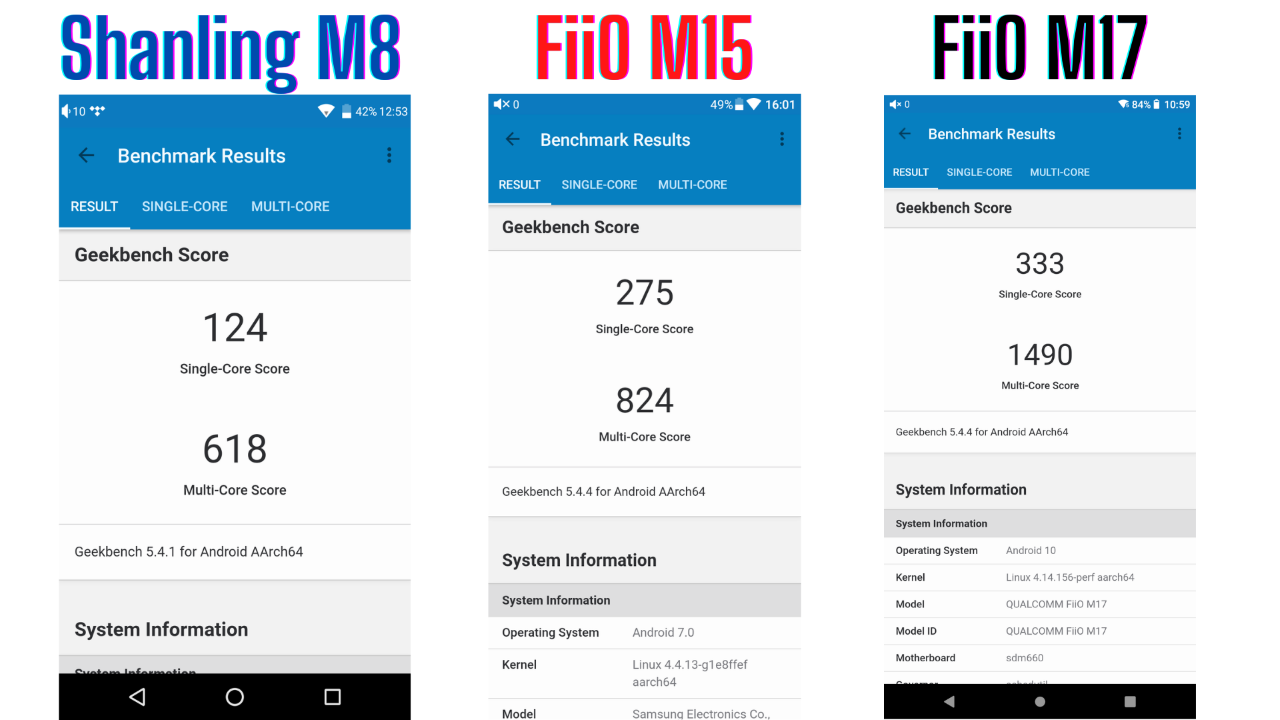
Sound Performance
I. Preliminary Sound Impressions
The moment I’ve seen two ES9038 PRO DAC chips and THX-AAA-788+ modules inside it, I got seriously worried that it might sound sterile and clinical, unlike their M15 that chose a warmish and a smoother sound signature. However, after pressing play and trying a bunch of IEMs and a ton of desktop class headphones, all my fears are now forever gone. The more I was listening to it, the more I started seeing a big resemblance to a $3400 Matrix Audio Element X DAC connected to a $3000 Benchmark HPA4, that uses a similar technology (THX-AAA-888). I almost couldn’t differentiate them, as M17 sounded exactly as clean, detailed and extremely transparent. The difference between M17 and M15 was bigger than coming from any other DAP made by FiiO to M15. The jump in sound quality was substantial to say the least. After closing my eyes and putting several desktop planar-magnetic headphones, M17 reminded me about well-thought desktop setups. It sounded massive, big and enveloping, there were more layers of music, more air in between the notes, unlike usual portable devices that are struggling in delivering a well-spread soundstage.
FiiO went overkill by using desktop grade components and it really feels that way once music starts playing. I can say with confidence that it’s one of the most detailed sounding DAPs out there, there is so much more lingering in between those notes compared to M15, that I literally don’t see a point in comparing the two. M15 already provided a few glimpses of a desktop sound, but M17 further explored that idea, sounding exactly like a proper high-end DAC connected to a top-class THX-AAA headphone amplifier.
I’m glad to report that I’m not getting a dead-neutral presentation, it seems that FiiO added a bit more warmth and infused more midrange presence to a linear sounding setup. While its technicalities are up there with the aforementioned desktop setup, I find its low-end denser and fuller, midrange was more present in my tunes, while discarding listening fatigue and treble glare. The usual Sabre Glare™ that I’m usually getting from entry-level DACs is no more on FiiO’s M17.
If you can’t part ways with technicalities as speed, impact, tight control of the drivers and an open-wide soundstage, then M17 seems to have them all, while adding just a pinch of soul and midrange presence, so it wouldn’t sound boring or clinical in the long run. I could never call the former M15 as slow or gentle sounding, but oh boy, M17 is something else completely when it comes to transient response. M17 sounds faster, slams harder down low and it decays all that instantaneously, never lingering for a microsecond longer.
M17 just single-handedly outperformed a lot of entry to mid-level desktop DACs and headphone amplifiers that I’m testing on a weekly basis and this isn’t an exaggeration from my part. The biggest surprise was driving big artillery headphones as Audeze LCD-4, Hifiman HE1000SE, Kennerton Rognir and even Hifiman Susvara. It powered them all, while highlighting their strengths and never limiting dynamics. Susvara wasn’t driven as I know it on top-class amplifiers, but in DC mode powered by a better 12V iFi iPower Elite, M17 was squeezing about ~85 to 90% of what the mighty Susvara is capable of. Due to their smaller size and power supply constraints, portable devices are sometimes compromising the final outcome, some are limiting both ends of the FR, some are limiting dynamics and transients, some can’t power desktop grade headphones, but that rule no longer applies to M17 and that is the most impressive feat FiiO achieved with it.
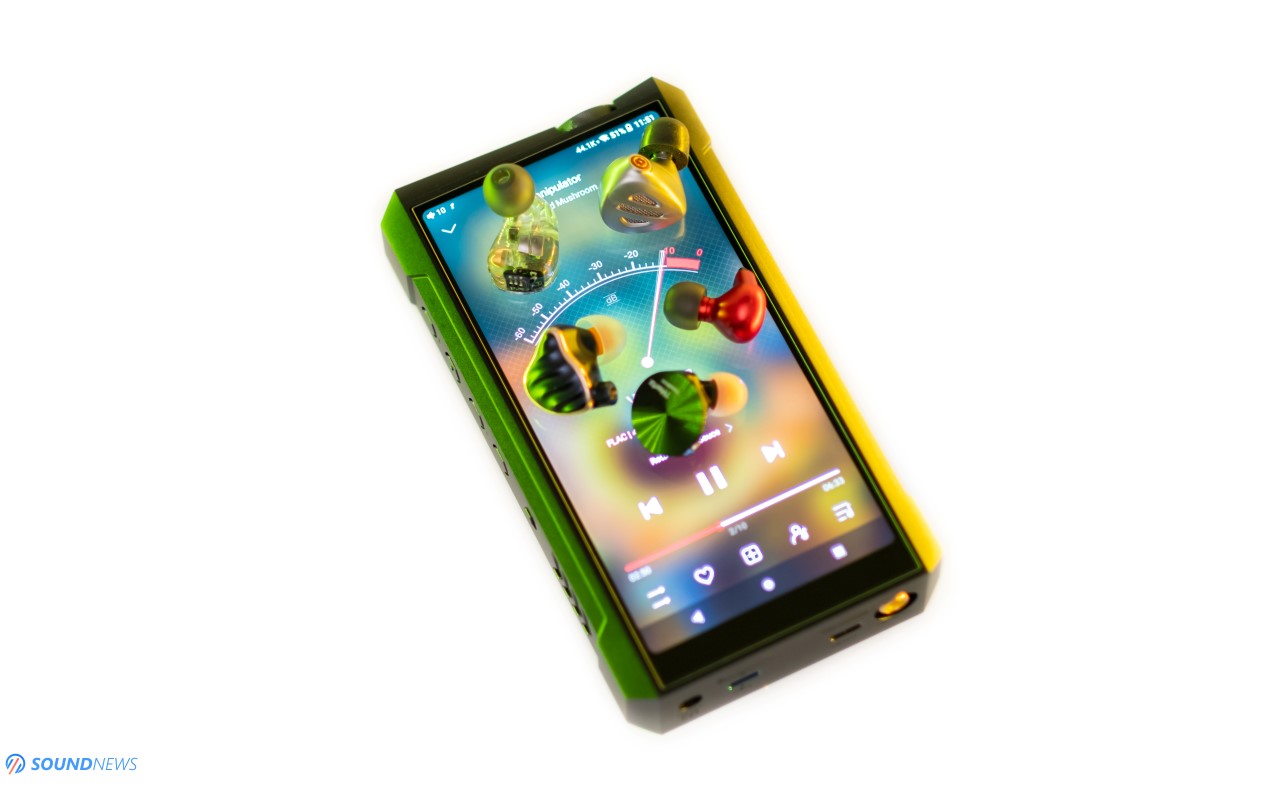
II. Noise Floor & IEM Pairings
FiiO is mentioning its noise floor with over-ear headphone mode engaged, but they aren’t mentioning it on Low, Mid or High gain, I will be testing that myself the hard way with the most sensitive IEMs I have at my disposal. With 113 dB per 1mW of power, FiiO FA9 put in its high-sensitivity mode is one of the best noise sniffers you can get for your portable or desktop sources/amplifiers. As a prologue, the latest FiiO DAPs were already dead-silent as far as noise goes, only their top-dog M15 had some when over-ear headphone mode was being engaged, otherwise it was noiseless and their M11 Plus LTD performed pretty much the same.
I’ve went directly on the 4.4mm output, high-gain, I’ve paused my music and went all the way up, just to hear a disturbingly loud sound of silence. That is great engineering to me, as no matter the selected headphone jack or volume level, M17 was peaceful and completely noiseless. At first, I thought that it’s a software trick, so I re-did my tests with third party apps, including Qobuz and Tidal and sure enough, M17 was inaudible as far as noise goes, it felt like it was turned off completely. There was a complete silence between passages, there was nothing in between them, just a pitch-black void of nothingness with musical notes appearing out of thin air.
As you can expect anything else that is less sensitive like FiiO FH9, FH7, Meze RAI Penta, 7Hz Timeless and Little Dot CuKIS performed absolutely the same and that wasn’t a surprise. When it wiped noise out of existence, channel separation and the feeling of air traveling around improved, inner-details felt boosted, leading to an engaging and punchy sound with all my IEMs.
Later on, I decided enabling its over-ear headphone mode that was specifically tailored for desktop grade headphones and only then a faint and barely audible hiss appeared on sensitive IEMs. Regardless of my volume setting, it could be zero or maximum volume, there was a constant low-intensity hum. My advice is a simple one, if you’re an avid IEM user, then use its low, mid or high gain and you’ll never experience a dirty background noise. Over-ear headphone mode should be used only with difficult loads. When I’ve attached higher sensitivity planar-magnetic headphones like Erzetich Phobos V2021 and Kennerton Rognir, regardless of the selected volume or gain setting, the noise floor went deep into the abyss and I couldn’t detect it anymore, even with enhanced over-ear headphone mode engaged.
Stacking it with my smartphone and using it as a USB DAC, should be the ultimate test, as it needs to deal with Wi-Fi, Bluetooth and 5G interference, but I’m happy to report that it sounded exactly as it did on its own, it didn’t increase the noise floor all, making it a perfect portable DAP or desktop DAC to be used at home or on the go.

III. Power Output
A. Battery Mode
M17 offers a maximum power output of 1.5W (or 1500mW in DAP terms) in 32Ω on its balanced outputs. Pardon me if I’m wrong, but this looks like the highest number to be seen on a battery powered DAP. It was a huge reserve not only in terms of sheer power, but also in terms of electrical capacitance (μF), meaning that it can push a lot of power in an instant, without losing its grip and sustain with lightning-fast music. That over-ear headphone mode was clearly made for driving heavier loads as all sorts of desktop headphones.
Instead of using dynamic driver headphones, I decided throwing it in a den of three wolves: Audeze LCD-4, Kennerton Rognir and Hifiman Susvara. All three are planar-magnetic headphones that need more current compared to dynamic headphones. I chose them specifically, as they put to shame several portable DAPs in the past. First two worked decently enough with a FiiO M15 and Shanling M8, but never exemplary on any portable devices, but I feel that is going to change today.
With Rognir, I was far away from reaching its maximum volume, they become loud and quite fast. I did some experiments with and without the over-ear mode and once it’s engaged, I’m feeling that the sounds are pushed farther away from me, air is thickening, bass seems to go lower, everything felt more controlled and way more focused. I felt a higher engagement factor with my music, being always connected to it. With high gain, music became dryer, all sounds were closer to my ears, the final outcome was a bit lifeless and not that engaging to me and I’m not about volume or dynamics, everything took a serious hit.
After engaging its highest gain setting again, my face brightened, dynamics rushed instantly and I felt how my ears started flapping in the air with electronica beats, as bass slam improved tremendously. Long story short, Kennerton Rognir were fully driven to their maximum potential.
Moving on to the LCD-4, I was at around ~90 out of 120 volume wise. LCD-4 were throwing a massive soundstage, that stretched wider to any other DAP I’ve put them before. M17 was simply decompressing and untangling my music, pumping more positive energy along the way. I observed that low intensity notes filled my head in no time, bass was going lower and it kicked my eardrums with a higher force. I would never guess that I am listening to a battery powered device. As it was the case with Rognir, LCD-4 were driven to their fullest and I’m extremely happy about that, as when I’m traveling, I tend to carry a small desktop setup with me, including a pair of desktop planar headphones, but that will no longer be the case with an M17 at my side.
Only when I switched to the Hifiman Susvara, I felt that dynamics were slashed by a little, volume wise I was going past its 105 setting, remaining a much lower headroom on tap. On higher quality recordings as classical and blues, I was often times maxed out and Susvara weren’t singing to me the way I like it. It was clear to me that Susvara needed more power to shine and this is where that external switching mode power supply gives a massive helping hand.
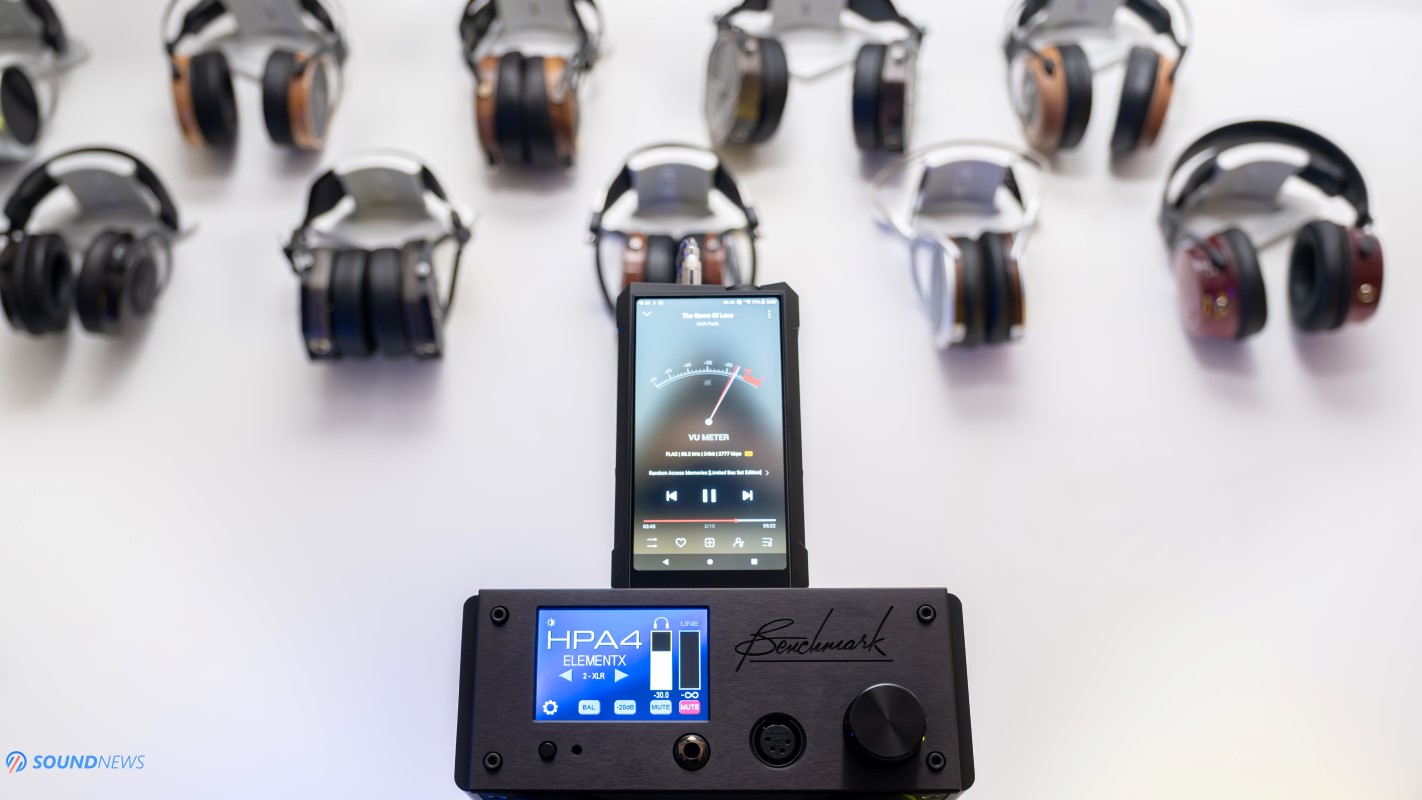
B. DC Power Mode
After connecting its external power supply and switching M17 to its DC working mode, a new gain setting is being unlocked called Enhanced over-ear mode. In simple terms from a 1.5 Watts per channel, M17 is now providing up to 3 Watts of raw power. In this mode, FiiO recommends using its dock and enabling its cooling fan, as without it M17 becomes quite hot in just a few minutes of play.
I’ve redid all my tests, but especially with the Hifiman Susvara and I’m happy to report that so far, M17 is the only DAP that could decently drive the Hifiman Susvara to satisfactory levels. Obviously, Suzy didn’t sound as fearless, bold and impactful as I’m hearing them out of a Ferrum OOR + Hypsos power supply, it wasn’t on the same level with 2x Benchmark AHB2 power amplifiers bridged together that are pushing around ~55Watts in 60 Ohms, but clearly M17 was delivering around ~85% to 90% of that experience. Dynamics felt improved, bass notes were more playful this time around and from a semi-open experience, Susvara sounded more open and holographic to me. This came as a huge surprise, as Hifiman Susvara is no easy task even for most desktop headphone amplifiers.
If you want to further elevate your listening experience, I recommend swapping its stock switching mode power supply with a 12V iFi iPower Elite that made the whole experience more natural, liquid and more impactful sounding. I know that M17 conditions DC power that is being delivered to it with a good power regulation stage, but still, iPower Elite improved sonics on all fronts, especially when it comes to dynamics.

IV. Transient Response
Ah, at last, my favorite chapter. Immediately after unpacking it, I started a longer listening session without any kind of burn-in and even at that time, M17 struck me as being faster sounding to all their past doings, it was considerably faster to a Shanling M8 and FiiO M15 and the only limiting factors were my headphones and my music collection. It didn’t change that much before and after burn-in, I’m not exactly sure if FiiO are doing a few days of burn-in for their best creation, but it looks that way. As you well know by now, transient response can be split into two parts: the speed of sound and the final impact that lands on your eardrums. On very rare occasions a portable device would provide both, without halting dynamics or pressing the brakes with faster tunes. Take their M11 Plus LTD as a very good example. I found it speedy, decaying my music at the right time, but it didn’t pound my eardrums when electronic beats came forward to play. It was impactful only with IEMs and barely okay with desktop headphones. M17 on the other hand was never pressing the brakes when Daft Punk, Igorrr or Infected Mushroom were trying to impress with quick shifts in dynamics. M17 was both a speedy sounding mustang and a hard-slamming unit.
I have several test tracks that in mere seconds will reveal the secrets behind any DAP. Doin’ it Right by Daft Punk (Qobuz / Tidal) is quite a relaxing and easy-going track, but those bass lines were sent by the thunder God himself, there is definition and bass depth, sending layers of bass that can be heard only on proper headphone amplifiers and top-class planar magnetics. With LCD-4 on my head, those became so obvious that a second and a third track wasn’t necessary anymore. M17 sounded so close to my Benchmark HPA4 that I have a hard time differentiating which is which. I’ve tried a big majority of Achromatic Audio Amplifiers (AAA) by now and they all sounded lightning quick, they were about lightning-fast transients and M17 is no different.

V. Soundstage & Depth
From all portable DAPs that passed through these hands, I believe that Shanling M8 closely followed by the FiiO M15 were the biggest sounding DAPs I’ve tested so far. Their huge power reserve and higher capacitance paid off big time, always trying to decompress my music by adding some air in between the notes. Even crowded underground music wasn’t closed-in sounding anymore. Besides offering a much higher power output, this time around FiiO has a different ace in their sleeve, that is called a supercapacitor. That m letter from its 470mF supercap stands for million, yep, you’ve read that right: 470 million farads…There are several companies that started adopting supercapacitors in their DACs due to their incredibly large capacitance and FiiO followed the same path. In simpler terms, M17 can store an impressive power reserve and unleash it instantly when dynamics are trying to reach their peaks. M17 would never limit dynamics and subsequently the air travel. When I’ve mentioned before that it sounds more like a desktop DAC connected to a desktop headphone amplifier, I wasn’t joking around, as M17 indeed tries to mimic a desktop setup.
Regardless of what music was being played, be it offline or via streaming services as Qobuz and Tidal, M17 was always sounding big, spacious and wide. All my planars (with the exception of Hifiman Susvara) sounded exactly as they did on a high-end desktop headphone amplifier, especially when it comes to depth, layering and stage size.
THX-AAA designs weren’t absolute champs when it came to air travel, but with clever engineering skills, everything is possible. Since I’m describing the cleanest sounding DAP out there, I’ve also perceived an excellent pin point location of the notes, their sharpness was fully preserved, leading edges were crystal clear and it wasn’t a challenge following a drum solo that was buried deep into the mix. It’s pointless describing how it sounded with a track or two, as I will be arriving at the same conclusion that M17 is the newest champ when it comes to depth and scale on all axes.

VI. Detail Retrieval
Did you know that from an engineering point of view ES9038 PRO can be programmed in different ways? It can work in a mono, stereo or 8-channel mode with either current-mode or voltage-mode operation. Most ES9038 PRO designs of today are using it in a stereo configuration with voltage mode operation, due to a much lower cost, research & development time and that is perfectly fine. However, if you want to squeeze maximum performance out of it, this particular silicon gives a lower total-harmonic-distortion if current mode is being used. This configuration adds a lot to the cost, as a dedicated I/V (current to voltage) conversion stage needs to be built around the ES9038 PRO. The better the I/V conversion stage is = a higher precision can be squeezed from the DAC chips and the same can be said about its operation mode, as in mono mode it will output a higher dynamic range.
FiiO is specifying only that both chips are being used in an 8-channel mode, paralleling their outputs for a superior resolution and minimal distortion. By looking at the graphics provided on its official web-page, it seems that a discrete I/V conversion stage was indeed built around those ESS chips, meaning that a higher performance was squeezed out of them.
I mentioned all that information so you can better understand its inner workings and everything what I’m going to say next. You see, M17 has all the skills of putting to shame plenty of modern desktop DACs, especially those below a ~$600 mark don’t stand a chance versus it. FiiO already assembled plenty of clean sounding DAPs that are trying to squeeze the last layer of information from your tunes. M11 PRO, M11 Plus and M15 are coming to mind, but this fellow right here is on another level altogether. Simply put, it’s one of the most detailed and transparent sounding DAPs I had the pleasure of listening at my place. It’s a difficult statement to make from the DACman himself, but it’s all true. I’m listening to it for several weeks now and the shockwave isn’t as big as it was on the first day, but I’m still rediscovering tiny nuances in tracks I never knew were there in the first place. The biggest shock came when listening to music that I know for a lifetime and experiencing it exactly as clean, as vivid and as detailed as a top-class D/A converter. This is easily the most impressive part about it.
How about listening fatigue, brightness or dryness in the midrange? There is none of that in here. When I’m not having any of that with a dead-neutral headphone as Hifiman Susvara or HE1000SE, then it simply doesn’t exist. Musical notes were appearing and disappearing, without causing listening fatigue, it has a sound signature that you want to listen to without thinking about technicalities or other boring things. The biggest drawback with such a unit is that you can’t multitask while listening to music. It happened so many times already, a new nuance would appear in a track and I would turn my head checking if someone stepped into my office. It will show all inner details in a brutally honest way. Mastering errors can become a burden as you can’t skip them, there is nothing to hide in the shadows, for me that is a big plus as this really differentiates a mediocre DAP from a high-performance one.
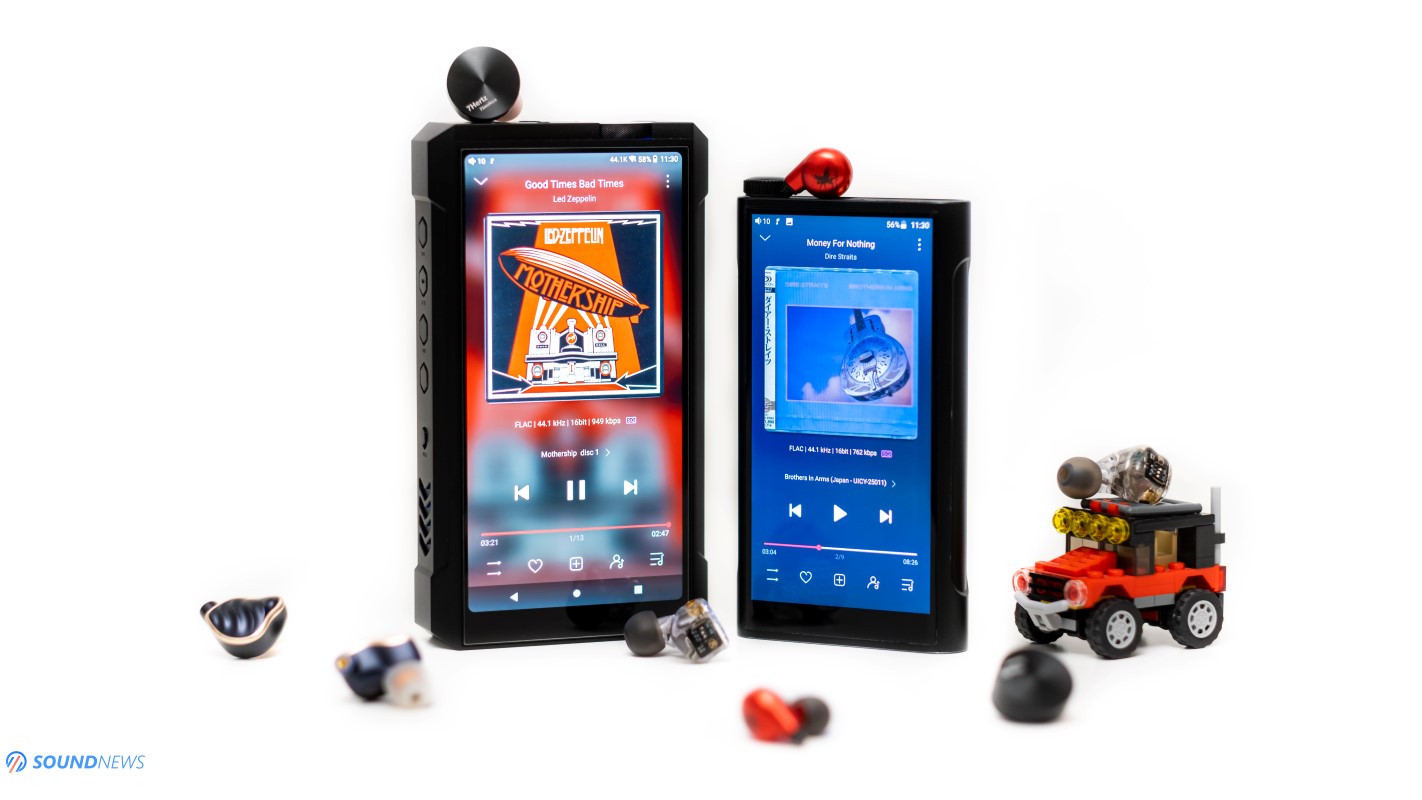
VII. Frequency Response
After putting it through its paces with several portable and desktop headphones, it was clear to me that I’m dealing with a dynamic range behemoth that can pull out the deepest and the highest notes, that can drag you into your musical nirvana, while preserving natural overtones and a rich tonality…something that their M11 PRO and M11 Plus LTD couldn’t execute at such a high level.
A. Bass
Even from the first minutes of music playback, it was clear to me that M17 excels in the bass department. More so to their M15, M11 Plus and it’s even more impressive compared to a Benchmark HPA4 desktop headphone amplifier. I’m not exactly sure what secret sauce FiiO poured over those THX modules, but is sounds stronger and deeper in the bass. I was surprised by the amount of bass that was coming from a Kennerton Rognir, as M17 made them considerably more impactful sounding. Its bass performance felt immaculate, it easily went to the deepest pits, being maintained if the track was asking for it. I found it speedy and it was always clean and detailed down low. If you enjoy being bombarded by layers and sub-layers of bass, then M17 got that in spades. This particular region stood out immediately and be it sub or mid-bass, M17 knows how to impress an electronica addict. Forget about bass distortion even at maximum volume, that would never happen on M17’s watch. Even harder loads as Hifiman Susvara didn’t send it into clipping territory, highlighting that I’m dealing with an excellent bass rendition.
B. Midrange
If you think about it, an ESS Sabre design plus a THX-AAA headphone amplifier that were specifically designed to sound colorless, linear and straight as a line in terms of FR, should hurt the midrange definition by a little, but FiiO engineers added a special recipe that made it slightly more natural sounding to their former M11 PRO and M11 Plus LTD. While I can’t call its midrange soul grabbing, liquid or overly smooth sounding, it was far from being clinical or plain boring. It sits somewhere in between, delivering just the right texture and presence, so I would be carried away by a strong vocal performance or by a guitar solo. As you can expect, this region felt exactly as clean, detailed and free of any distortions. Vocal cords weren’t vibrating as long as it happened on a FiiO M15 or Shanling M8, but I find this performance closer to the real thing. This isn’t you full-bodied and rich sounding midrange, but there are still traces of that sound. Think about a linear midrange with a few crumbs of warmth and liquidity and you’ll be getting M17’s midrange.
C. Treble
What struck me is that their M11 Plus / M11 PRO units were slightly more aggressive sounding in this region, I found them a little raw around the edges. After several days of break-in, they were smoother sounding, but still, some treble glare never went away. Compared to those, FiiO somehow calmed the top-end, smoothed out the upper treble and all that remained was an extended treble delivery. It goes without saying that its upper treble region felt precise, sharp and very textured, without making me lower the volume once aggressive music appeared on my playlist. When I’m reviewing portable DAPs, I’m seeing a pattern: if I’m listening to a lot more blues and jazz, then it means I can’t stand their treble glare. With M17, I was mostly listening to modern rock and electronica tunes, suggesting that I wasn’t bothered by its treble delivery a single bit. Its treble felt clear, crisp and detailed, it easily went past top-octave and if you like your trebles defined and super-clean, then M17 should be right up your alley. Listening fatigue is forever gone and I could listen to tambourines, snare drums and bells all day long without clenching my teeth.
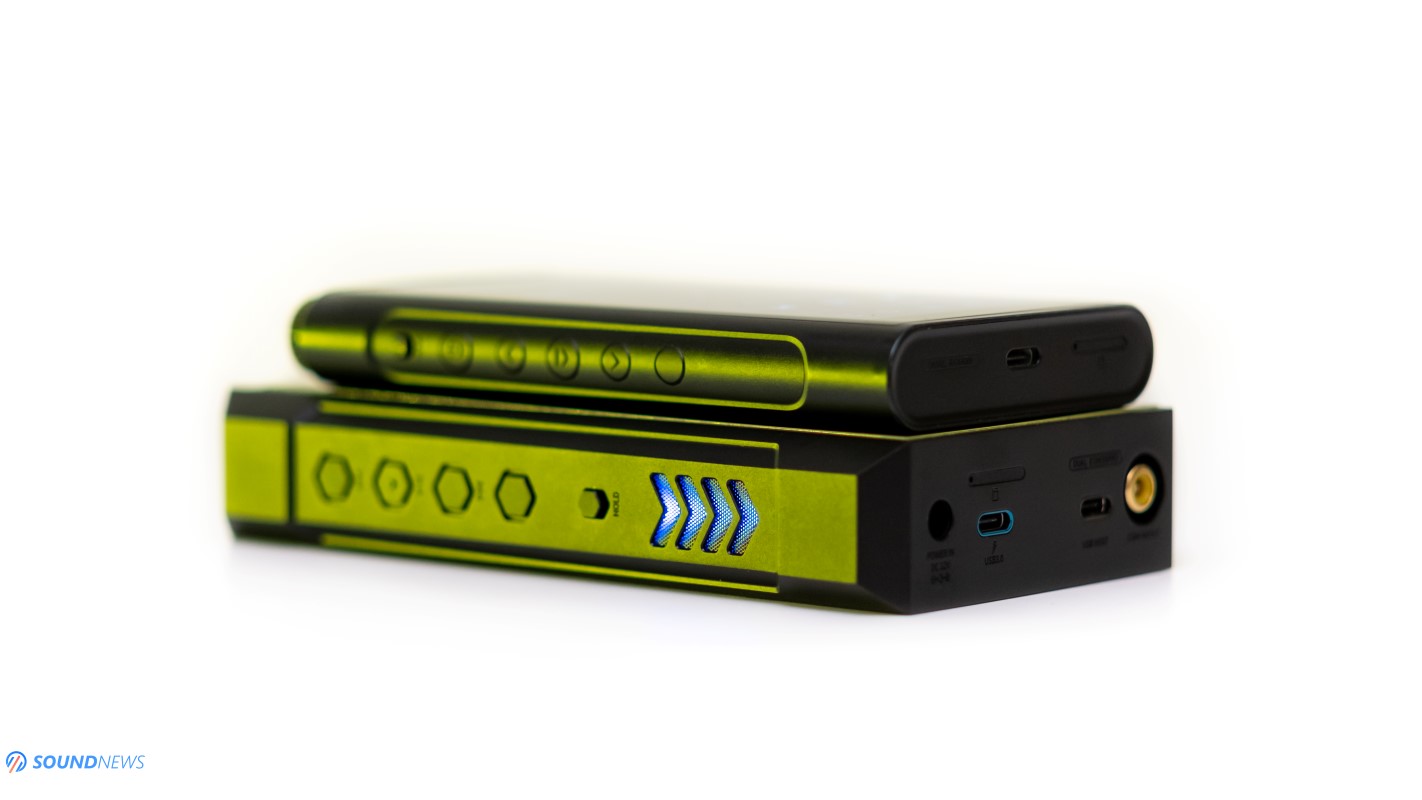
VIII. Wireless Performance
FiiO finally moved away from that aging Samsung Bluetooth chip that sitting in their former DAPs to the newest offerings of Qualcomm and let’s be honest…when it comes to Bluetooth, Qualcomm are doing the best chipsets full stop. Qualcomm’s QCC5124 is Bluetooth 5.0 enabled and it supports all those fancy Bluetooth codecs, including LDAC and AptX Adaptive.
As a sender, I connected a FiiO UTWS3 to it, driving several pairs of IEMs. The pairing process was easy and straightforward, its BT connection was stable and reliable and all those IEMs sounded good to almost great via Bluetooth.
As a receiver, I’ve connected my smartphone to it, I used Qobuz app and sent all that data to the M17. Again, the pairing process felt easy-peasy and the BT connection was rock steady even from 15 meters away in an open space. I personally don’t understand why would you use it as a receiver, because you can use any streaming app directly from it and it really moves as a flagship smartphone, you can even use your NAS, DLNA and UPnP servers with it and those will sound way better than any Bluetooth connection. But hey, additional features never hurt, it is always cool to have them at your disposal.

IX. An Important Comparison
FiiO M17 ($1800) VS FiiO M15 ($1300 – now discontinued)
I will be skipping all their specs, features, looks and I will be focusing my attention mainly on the sound quality and user experience. However, it needs to be mentioned that the newest SoC, a bigger and a higher resolution screen made the whole experience a lot friendlier than before. It moves considerably faster; it multitasks like a champ and I’m no longer getting stutters when I’m switching apps or playing back DSD content. When I’ve got the M15, it opened endless possibilities for me, as finally I could listen even to my closed back headphones on the go, something that their past DAPs weren’t doing that well. The power output of M15 made me happier than before, as headphones like Audeze LCD-4 and Hifiman Arya could be listened in hotel rooms or on the beach, something that felt as a dream a few years prior. M17 pushes that concept much further, it really unlocked the last gear when it comes to power output. My desktop planars sounded considerably tighter with it, faster and more impactful than before. I know that I’m repeating myself, but this is exactly how M17 sounds with all my headphones, it just squeezes the last drop of performance out of them. It’s so incredibly satisfying knowing that your headphones are fully driven and nothing holds them back anymore. Hifiman Susvara was the only headphone that wasn’t pushed and pulled the way I like it, but in DC power mode they sounded more than decent to me, preserving dynamics and portraying a bigger picture.
When it comes to sheer resolution and detail retrieval, I’m sorry for what I’m going to say next, but M15 pales in comparison. It isn’t even a contest, as M17 was considerably more detailed and resolute and no matter how hard its older sibling tried, tiniest nuances were absent on M15. M17 does indeed sound like a well-made desktop DAC in this department. It’s crystal clear, merciless at times and if you love hearing the truth alone, be it as it is, then M17 will easier deliver all that information to you. I didn’t need to close my eyes and use specific headphones or IEMs, as it was too obvious from the start.
While M15 goes with a somewhat warmer and richer tonality, M17 sounds like a more mature product, never trying to beatify or add a layer of sweetness on top. FiiO knows very well the limitations of the ESS chips and the slight clinical nature of THX-AAA modules and they counterbalanced those issues. There is still some warmth and richness on M17, just the right amount so it wouldn’t sound boring or lifeless.
Oh, about that…I remember calling M15 as impactful and visceral sounding at that time, but when M17 drove difficult loads, it was even more impressive in here. M17 delivered an outstanding transient response, especially when it comes to bass impact. It literally pounds like a well-regarded desktop headamp. I remember listening to the Kennerton Rognir on M15 for a few hours, but after switching to M17, I’ve heard additional bass layers and depth information that were missing on M15. M17 was fearless and substantially meaner sounding down low. It is a little unusual, because I never felt such an immaculate bass performance on portable devices.
M15 was great when it came to pin point location of the notes and scale, but M17 had a darker background and that somehow increased the air bubbles between the notes, there is more void space in between them and my crowded music wasn’t pushed up-front as much. It goes without saying that M17 was bigger sounding on all axes, be it width, height or depth, M17 would be infusing more air with a greater sense of ease.
The whole frequency response felt more complete on M17, there was more information in the lowest and highest registers. M15 is no joke, it still sounded quite extended, but M17 never rounded the frequency extremes, there was simply more information anywhere in the FR.
If you’re an avid IEM listener and you already own the M15, I don’t think there is a point in upgrading to an M17, it will sound better of course, but the technical gains might not be substantial as it happens with desktop grade headphones. On the other hand, if you own a big collection of IEMs, portable and desktop headphones, then M17 feels like a massive upgrade from any point of view. The king is dead, long live the King!
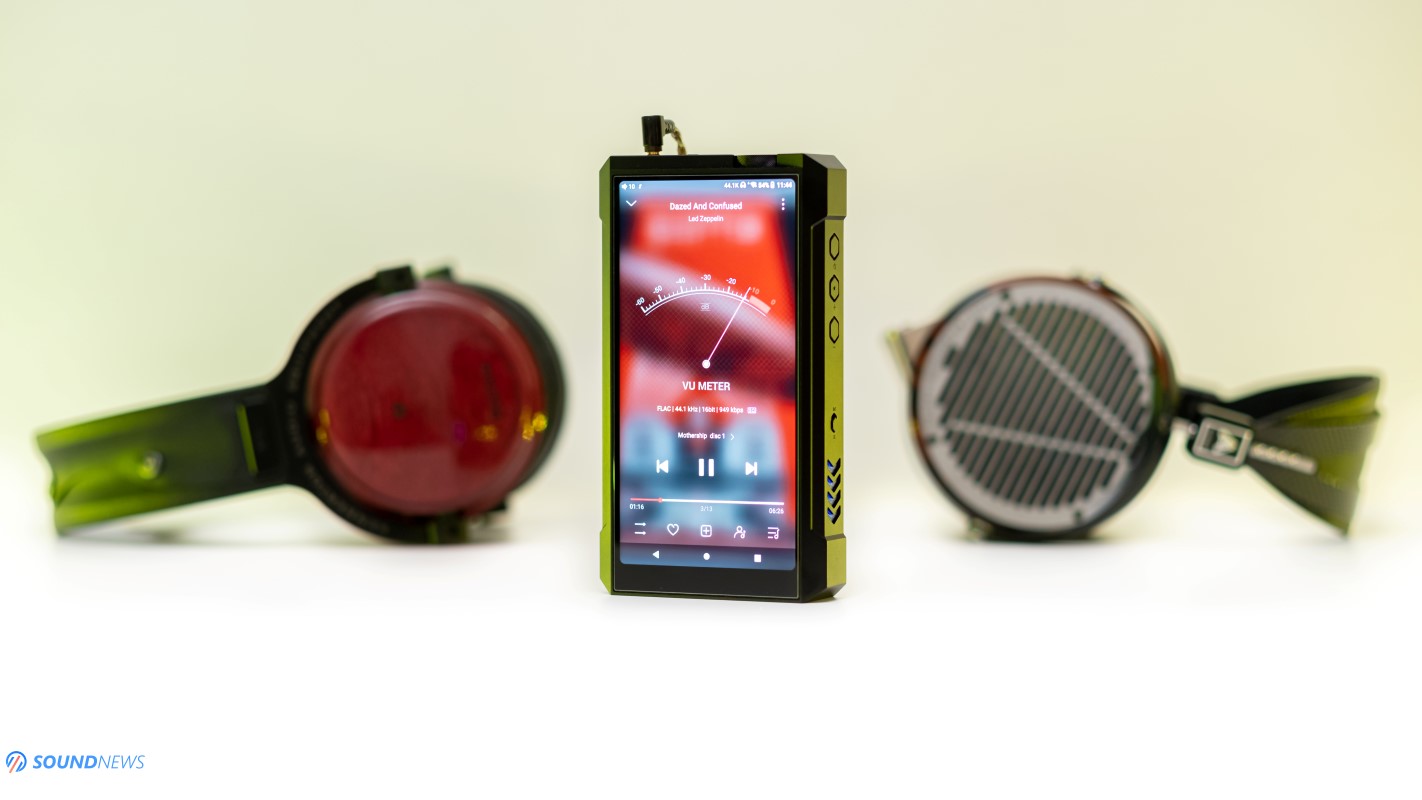
My Conclusion
I know that its sheer size and weight will put off a lot of people. However, it’s close to impossible designing a no compromise device without increasing internal space and weight. FiiO didn’t limit it in any way, they added more, they even made it work with DC power, something I never thought could be done on portable devices. It’s big ‘n heavy, it dissipates more heat when last gain setting is being accessed, but that’s perfectly fine, as I can accept that compromise while grinning with a Hifiman Susvara on my head. Don’t look at it as at another FiiO DAP, but take it as a hybrid desktop DAC/Amp and transportable DAP that could fit in your jeans and drive the heaviest loads with flying colors. It’s an expensive unit no matter from what angle I’m looking at it, but considering everything that was cramped inside, all the wireless tech and custom THX modules, I don’t find it pricey anymore.
When it came to sheer performance numbers, you won’t find them anywhere else and this is where M17 shines brighter to its competition. Starting with detail retrieval, transients and finishing with soundstage, M17 sits alone on an iron throne, ready to be challenged by newcomers.
There isn’t a more unusual DAP and a more courageous team that thought outside a box and that’s precisely why I’m going to award it our prestigious Gold Award. Congratulations to the team and I’m looking forward to what’s coming next!

FiiO M17 was kindly provided by FiiO, you can purchase it from their AliExpress Store, you can get it from their worldwide distributors right here, or you get it from Apos Audio right here. (Apos is offering free shipping in the USA and Canada, free 45-day returns in case you don’t like it, an extra year of warranty and they will price match the lowest one you can find online).
If you get one, please come back and leave a comment below, I’m curious to know how it performs with your headphone collection.
PROS:
- Big, Bold & Unusual looking
- CNC machined case, outstanding build quality
- Bigger and higher resolution LCD screen
- An excellent unboxing experience, plenty of accessories are being offered, including a leather case
- A much faster System-on-Chip and a bigger RAM makes it faster and snappier in daily use
- Unlocked Android 10 with Google Play Store support
- Modern and fast-moving UI, FiiO Music never looked better
- There are multiple ways to control its volume (4 ways to be more precise), many buttons can be enabled, disabled or customized
- Linear tonality, balancing towards naturalness
- The fastest and the punchiest sounding FiiO DAP to date
- The most powerful current-production DAP, could drive even the notorious Hifiman Susvara
- Extended frequency response, without rounding off frequency extremes
- Clean and imposingly detailed, rivaling even top-class desktop DACs
- Dead-silent with IEMs if you never touch its over-ear headphone mode
- Sounds spacious and deep, in line with well-made desktop headphone amplifiers
- Offers a wide Bluetooth coverage and codec support (LDAC and AptX Adaptive rocks!)
- Probably the most interesting DAP I put my hands on
CONS:
- Pricey, especially in Europe
- It’s big and heavy, I don’t find it portable and more like transportable
ASSOCIATED EQUIPMENT:
- DACs: Audiobyte HydraVox & HydraZap, Matrix Audio Element X, Gold Note DS-10 Plus & PSU-10 EVO, SMSL VMV D2, Singxer SDA-6 PRO, Gustard X16 Custom
- DAPs: FiiO M17, M15, M11 Plus LTD, Shanling M8
- Headphone Amps: Benchmark HPA4, Flux Labs Acoustic Volot, Ferrum OOR + Hypsos PS, Burson Audio Soloist GT, Trafomatic Audio HEAD2, several Topping, SMSL & Gustard units
- Preamps: Musician Monoceros, Benchmark HPA4, Topping PRE90
- Power Amps: KECES S300, Benchmark AHB2 (x2), SMSL SA400, Burson Timekeeper 3i
- IEMs: FiiO FH9, FH7, FA9, FA7S, FD7, Meze Rai Penta, LittleDot Cu KIS, Hiby Crystal 6, 7Hz Timeless & others
- Portable headphones: Sony WH1000-XM4, Sennheiser Momentum 2, Meze 99 Classics
- Full-sized headphones: Hifiman Susvara, HE1000SE, Arya Stealth, Sundara, Audeze LCD-4, Erzetich Phobos V2021, Phobos V2018, Erzetich Mania, Kennerton Rognir, Magni, Gjallarhorn, Vali, M12S, Apos Caspian, Sendy Peacock, Aiva & others
- Loudspeakers: KEF Reference 3, Sound Of Eden Crescendo UNO
- Interconnects: QED Reference (x2), Topping TCX1 (x2)
- Speaker cables: Kimber PR8, Audioquest Type4
- Power Cables: Isotek EVO3 Premier (x3)
- Balanced Isolation Power Conditioners: PLiXiR Elite BAC1500 (stereo setup), Elite BAC400 (headphone setup)
